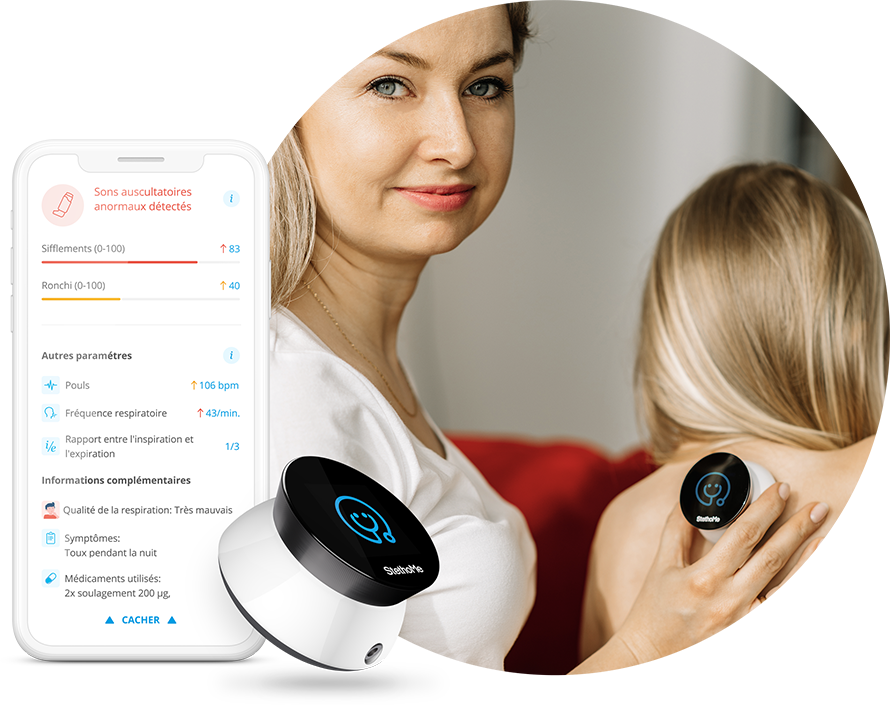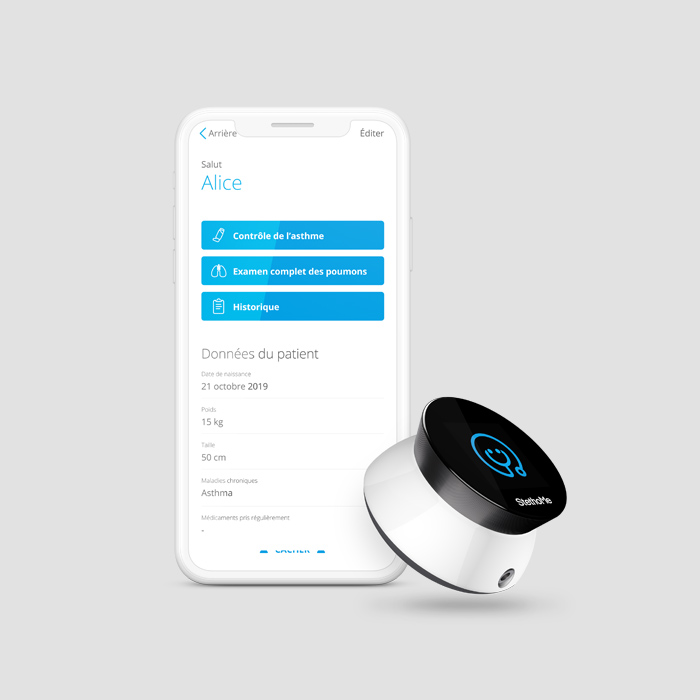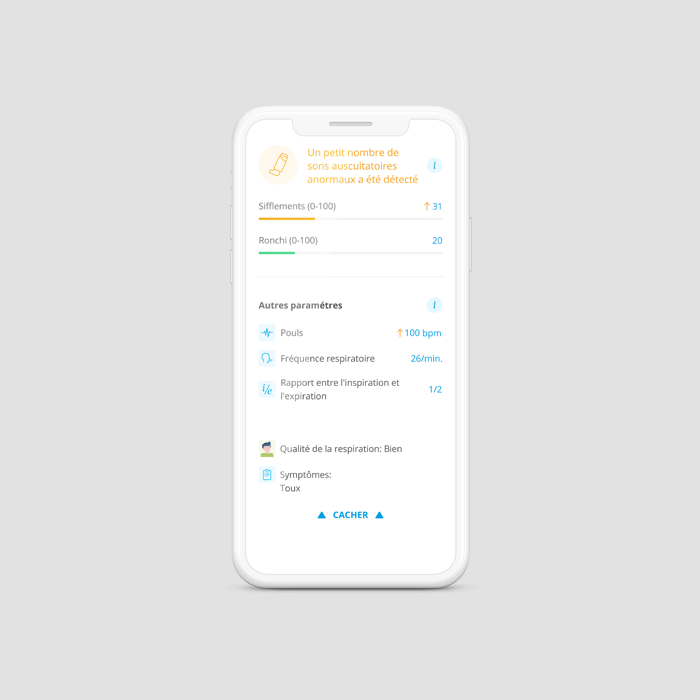
Commandez StethoMe®directement auprès du fabricant.
Surveillez la santé de votre enfant avec un stéthoscope intelligent
Avec l'aide du stéthoscope intelligent StethoMe:
Achetez StethoMe®
+ l'accès gratuit à l'application pendant une période de 12 mois
après la période de promotion, l'accès à l'application est de €4,5 par mois
+ l'accès gratuit à l'application pendant une période de 60 mois
après 5 ans, vous pouvez prolonger l'accès à l'application pour €4,5 par mois
Vous pouvez annuler gratuitement votre StethoMe dans les 14 jours suivant le paiement de votre commande. Pour ce faire, il vous suffit de nous envoyer une demande par courrier électronique à support@stethome.com et de nous renvoyer votre appareil. Vous pouvez également résilier votre abonnement à tout moment. Cependant, veuillez noter que vous ne recevrez pas de remboursement pour les jours d'utilisation de l'application StethoMe qui n'ont pas été utilisés.
L'application StethoMe est disponible sur les plateformes Android et iOS. Les versions logicielles suivantes sont prises en charge : Android 9 (et versions ultérieures) et iOS 15 (et versions ultérieures).














